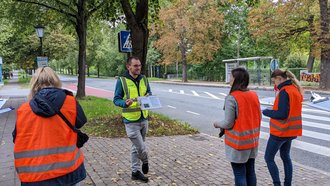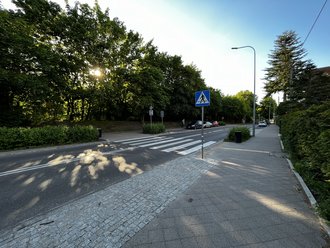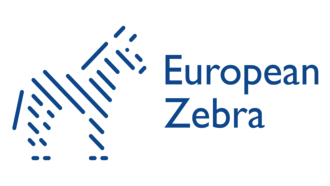How Safe Are Crosswalks? European Comparative Study Launches in Weimar
Whether it’s cars, bicycles or pedestrians, Julius Uhlmann is analysing how users behave at crosswalks as part of his PhD at the Bauhaus-Universität Weimar. With the help of video recordings from Germany, Poland and Latvia, the project investigates the risks posed at crosswalks and whether cultural differences affect road traffic behaviour. Starting in mid-November, assessments will be made in cooperation with the City of Weimar.
Are some crosswalks safer than others? Do pedestrians in Germany behave differently from those in Poland or Latvia? Does the volume of traffic affect the behaviour of drivers when they encounter a crosswalk? These questions and others are addressed by Julius Uhlmann, doctoral candidate in the Department of Transport System Planning, in his doctoral research titled »Evaluation and Comparison of the Behaviour of Motorists and Pedestrians at Unsignalized Marked Pedestrian Crossings in Europe« (European Zebra for short).
»The biggest question I want to look at is how culture influences traffic behaviour«, explains Uhlmann. To find out the answer to this question, he will be observing traffic behaviour via video recordings in Gdańsk (Poland), Rīga (Latvia), Weimar and Erfurt (Germany). »I’m especially interested, for instance, in how often drivers stop for pedestrians, how long pedestrians have to wait at crosswalks, and whether road users interact with one another.«
Increasing Safety at Crosswalks
»Reliable rules and infrastructure are necessary to prevent accidents in locations where pedestrians and drivers interact with one another«, Uhlmann explains. Traffic lights are expensive though and cannot be used everywhere; this makes crosswalks a useful addition to road infrastructure. In general: Pedestrians, wheelchair users and motorized wheelchairs have absolute priority over vehicle traffic. However, misunderstandings between road users arise time and again at crosswalks. With the help of scientific studies, guidelines for crosswalk safety can be further developed and, if necessary, restructured.
Assessments in Weimar
The assessments will begin in mid-November and continue until May 2023. As many as twelve crosswalks across Weimar, including the crosswalks at Marienstraße and Posseckchen Garten, will be scientifically analysed. »Data will be collected for research purposes only; it will not be passed on to third parties. We will ensure that the data of all road users is protected«, the scientist affirms.
Further information on the project can be found at:
www.europeanzebra.eu
And on Instagram:
www.instagram.com/european.zebra/
Questions can be directed to Julius Uhlmann, doctoral candidate in the Department of Transport System Planning, via e-mail at julius.uhlmann[at]uni-weimar.de or by phone at +49 (0) 36 43 / 58 44 57.
Kontakt
Bauhaus-Universität Weimar
Claudia Weinreich
Pressesprecherin
Tel.: +49(0)3643/58 11 73
Luise Ziegler
Mitarbeiterin Medienarbeit
Tel.: +49(0)3643/58 11 80
Fax: +49(0)3643/58 11 72
E-Mail: presse[at]uni-weimar.de
Web: www.uni-weimar.de/medienservice



